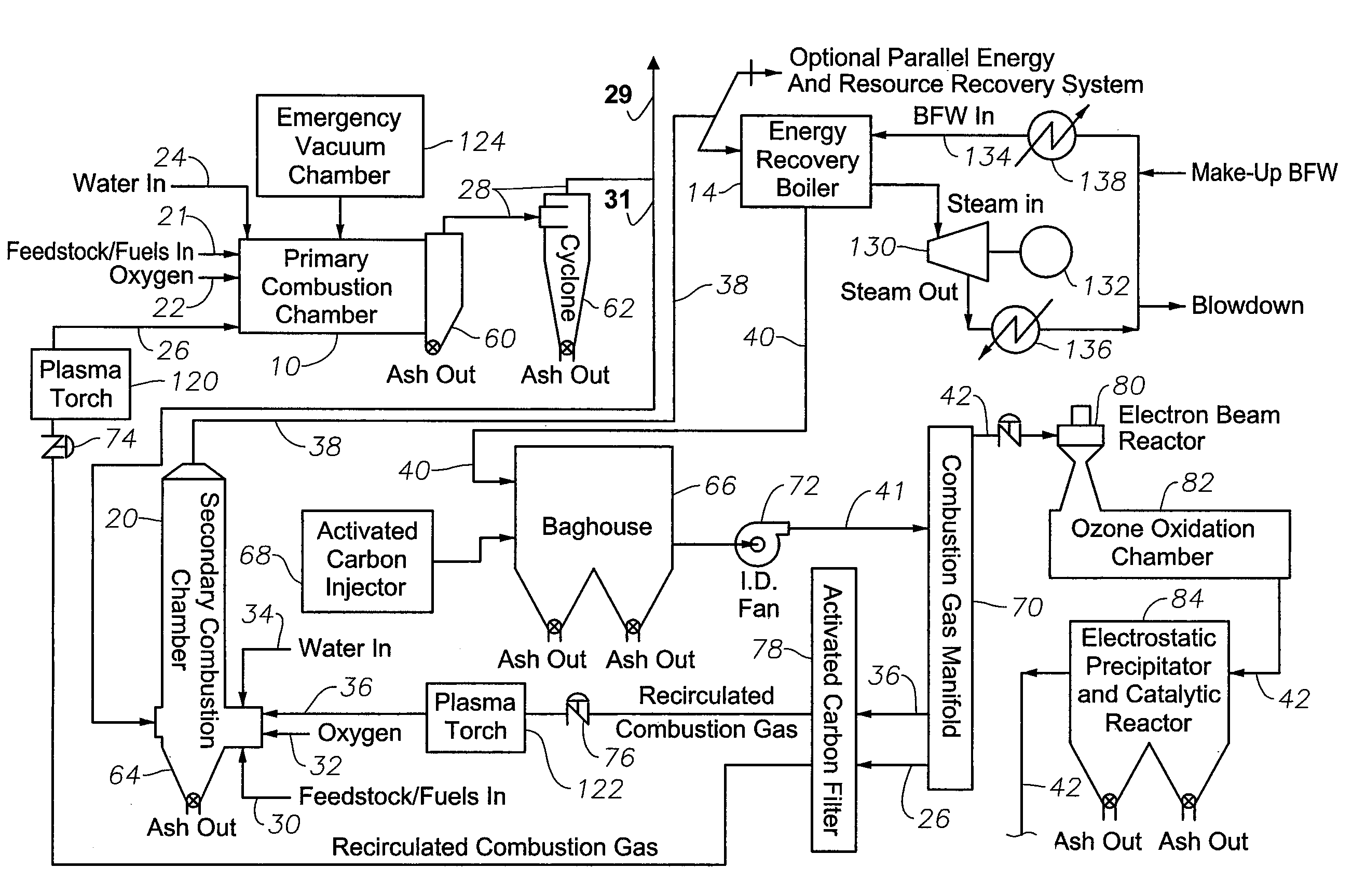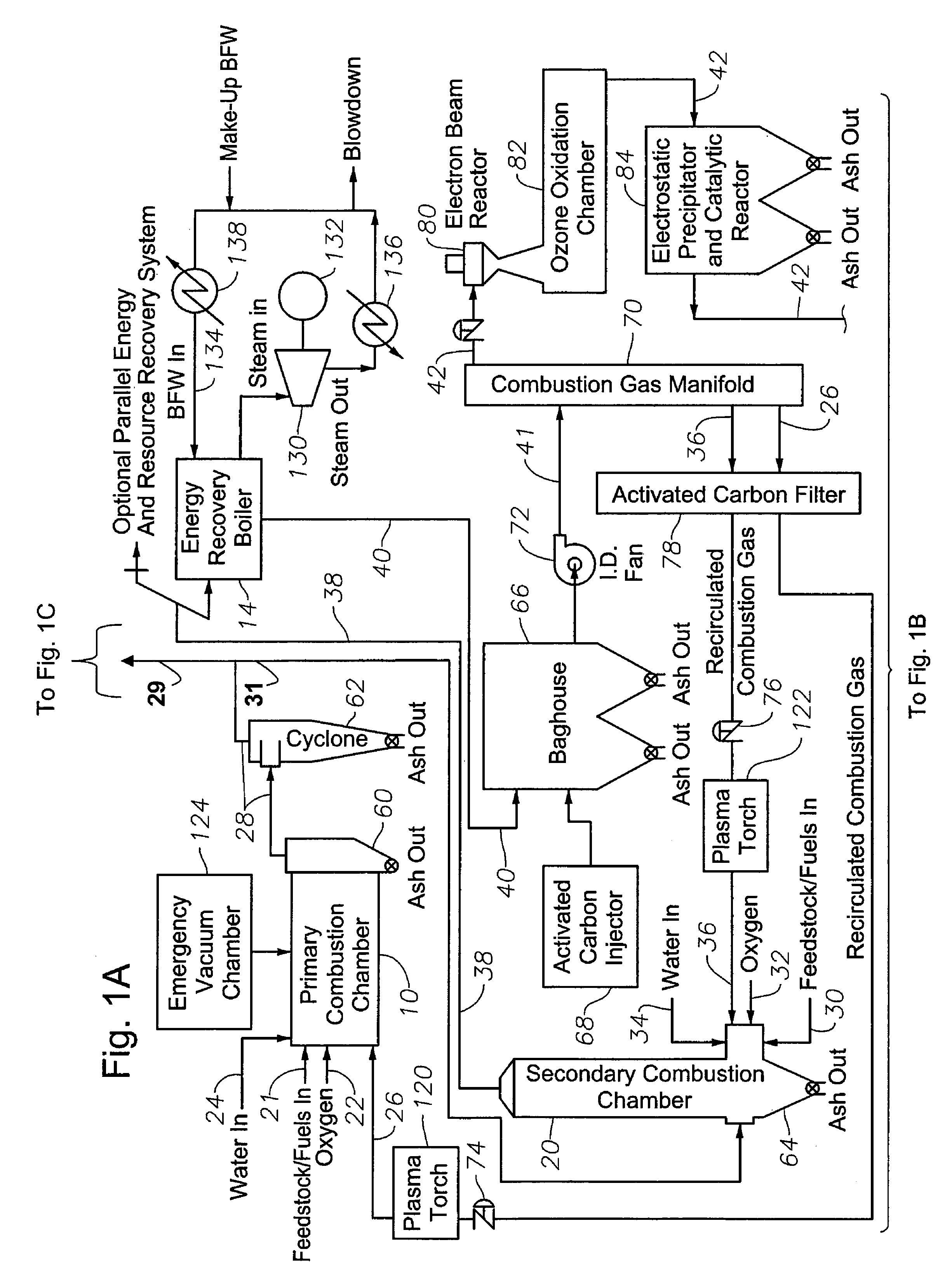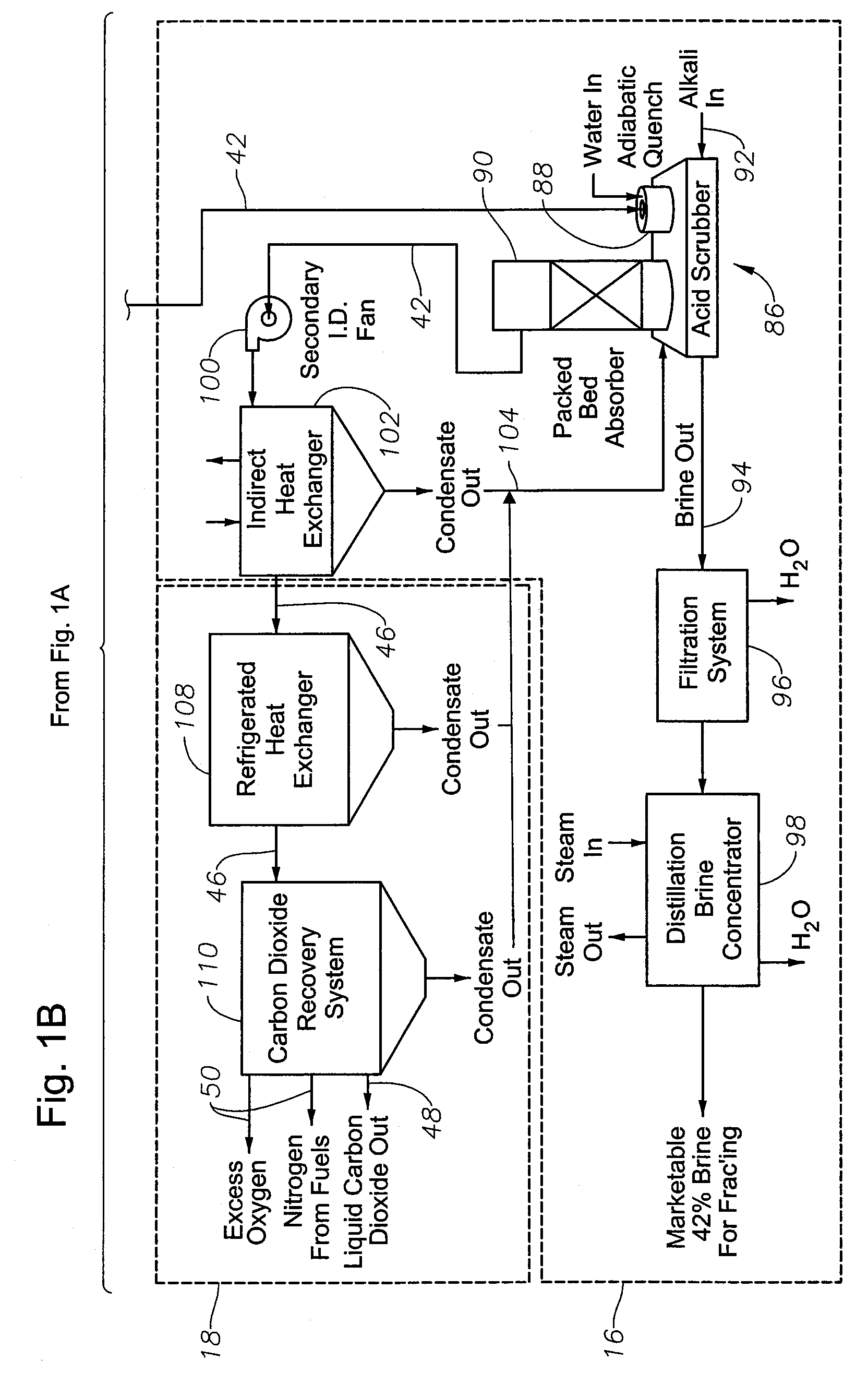Reduced-emission gasification and oxidation of hydrocarbon materials for liquid fuel production
a technology of hydrocarbon materials and gasification, which is applied in the direction of combustible gas production, combustible gas chemical modification, combustible gas purification/modification, etc., can solve the problems of high temperature, low gasification of dioxin, etc., and achieve the same throughput, reduce the size of the system, and increase the effect of combustion temperatur
- Summary
- Abstract
- Description
- Claims
- Application Information
AI Technical Summary
Benefits of technology
Problems solved by technology
Method used
Image
Examples
Embodiment Construction
[0019]A preferred embodiment of the invention is an overall process and system for maximizing both thermal energy generation and Fischer-Tropsch liquid fuel production while producing minimal (or zero) environmental emissions. The process and system utilize a wide variety of hydrocarbon feedstocks, including coal and biomass. The biomass feedstock may include corn, sugar cane, switch grass, wood chips, lignin, or any other carbohydrate and / or cellulosic materials. The feedstocks are first gasified using pure oxygen in a primary combustion chamber, wherein a flue gas comprising methane, hydrogen, carbon monoxide, and carbon dioxide is generated. A portion of the flue gas from the primary combustion chamber is then oxidized to carbon dioxide and water in a secondary combustion chamber. Much thermal energy is evolved from the gasification and oxidation of the feedstocks in the primary and secondary combustion chambers. This thermal energy is subsequently captured from the flue gas by v...
PUM
 Login to View More
Login to View More Abstract
Description
Claims
Application Information
 Login to View More
Login to View More - R&D
- Intellectual Property
- Life Sciences
- Materials
- Tech Scout
- Unparalleled Data Quality
- Higher Quality Content
- 60% Fewer Hallucinations
Browse by: Latest US Patents, China's latest patents, Technical Efficacy Thesaurus, Application Domain, Technology Topic, Popular Technical Reports.
© 2025 PatSnap. All rights reserved.Legal|Privacy policy|Modern Slavery Act Transparency Statement|Sitemap|About US| Contact US: help@patsnap.com



